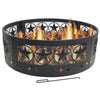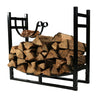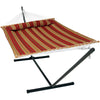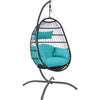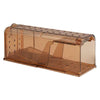When most of us picture a mouse trap, we think of an old–fashioned spring trap baited with a large chunk of yellow cheese. After all, mice love cheese… don’t they? The myth that mice love cheese is just one of the many misconceptions that people have about rodents and mousetraps. If you have traps placed all over the home, but have still not had any luck trapping pesky rodents, you might be going about pest control in the wrong way. This article will help you discover new strategies to trap mice as well as reveal some of the mouse-trapping mistakes you might be making.
4 Do's for Setting and Baiting Mouse Traps
DO: Use the Right Bait
Numerous cartoons have tried to convince us over the years that mice love cheese. This is actually not true. There are several bait options that will appeal to mice much more than cheese. Mice are actually primarily herbivores and most of their diet consists of seeds and nuts. Because of this, try baiting your traps with peanut butter or hazelnut spreads. Like humans, mice also have a sweet tooth and enjoy the taste of chocolate. Using spreads and butters instead of chunks of food can also make it more difficult for mice to snatch the bait and run away. High-protein foods like salami or cooked bacon are also favorites.
Bait doesn’t even need to be food. In the winter, mice will search for items that they can use for bedding. Fibrous materials like cotton balls, floss, or yarn can also appeal to mice and can be wrapped around a spring to make it easier for the mouse to deploy the trap as they try and pull the material away.
DO: Give the Traps Some Time
No matter what, trapping mice requires a certain amount of patience. Mice are highly aware of their environments and are suspicious of new objects. At first, they will be afraid to approach a trap. In order to familiarize them with the traps, leave the baited traps in the area, but do not set them. Pay attention to whether or not the mice are attempting to take the bait. If the bait remains untouched, you may need to move the trap to a more active location or find a more appealing bait. Once you’ve noticed that the bait is gone, allow the mice to take the bait a few times before setting the traps to help them get accustomed to the trap.
DO: Use Multiple Traps
It can be easy for a mouse to ignore a single trap, but placing several traps in an area can make it tougher for them to avoid. Plus, placing multiple traps allows you the opportunity to try different baits and see what the mice prefer. Try placing a trap every two to three feet in high-activity areas for the best results.
DO: Use Different Types of Traps
Mice are often smarter than we give them credit for, and unfortunately they can figure out how traps operate or learn how to avoid them. Outsmarting the mice is often half the battle. A way to do this is to use different types of traps. Once mice have worked out how to snag the bait from a spring trap, try swapping it out for a live trap or an electric trap instead.
4 Don’ts for Setting and Baiting Mouse Traps
DON’T: Wait Too Long

There is an old adage that says that there are 10 mice for every one you see. Unfortunately, there is some truth to this. Mice tend to be fast breeders and if the problem isn’t handled immediately, you might be facing a rodent invasion. Mice can produce litters every 21 days and a typical litter can consist of 6 to 7 babies! Yikes!
As stated earlier, it may take a little while for the mice to interact with the traps. This is all the more reason to start planning your pest control strategies at the first signs of mice. Droppings, scratching sounds, and chewed materials can all be signs of a rodent problem. In addition to traps, try using an indoor pest repeller to try and discourage them from making your home their home.
DON’T: Handle the Bait Too Much
No matter what you choose for bait, try to avoid touching it with your bare hands more than necessary. Mice can detect the scent of a human on traps or bait and will be afraid to approach the trap. To avoid this, wear rubber gloves while preparing the bait and setting the trap. This will help you avoid leaving your scent on the trap.
DON’T: Place Traps in the Middle of the Room
Mice do not live very high on the food chain and have to be wary of predators finding them. Because of this mice are wary of open spaces and won’t venture out into the center of the room. Placing a trap in the center of the room will not result in catching any mice. Plus, the humans and pets in your life will probably not appreciate having to step around the traps.
Instead, place traps up against the wall. Mice tend to stick to the perimeters of the room so they are more likely to encounter a trap here. The “bait” end of the trap should be pressed against the wall so the mice are more likely to explore the trap instead of making their way around it. If you are using a live trap, make sure the trap is clear of obstructions so it is easy for the mouse to enter the trap.
DON’T: Use Too Much Bait

It seems like placing a large amount of food would be irresistible to a hungry mouse, but this is actually not the case. Setting out too much food can actually make it more difficult for the trap to deploy so you end up actually feeding the mice and exasperating the problem. If you are using food, all you really need to bait your trap is a pea-sized amount.
Even though they are some of the smallest creatures, mice and other rodents can pose a big problem. It’s important to find the right traps, repellers, and bait for any situation and use them correctly to keep the mice at bay.
For more tips on how to protect your home from pesky critters, check out our birds and wildlife articles.





